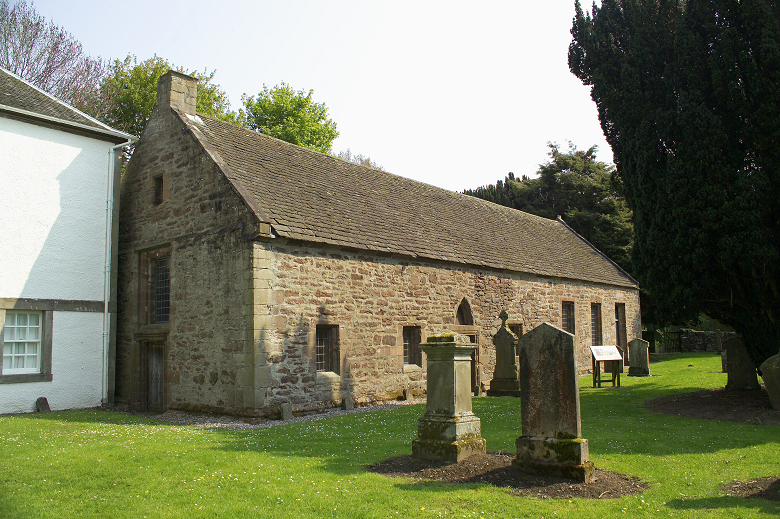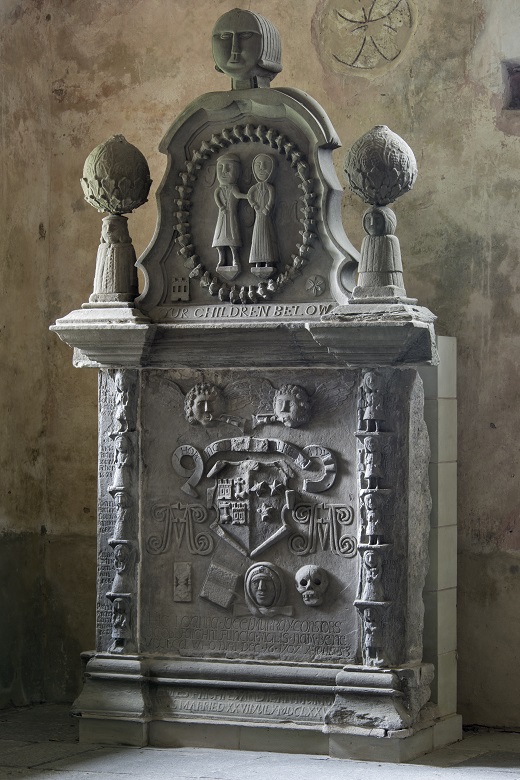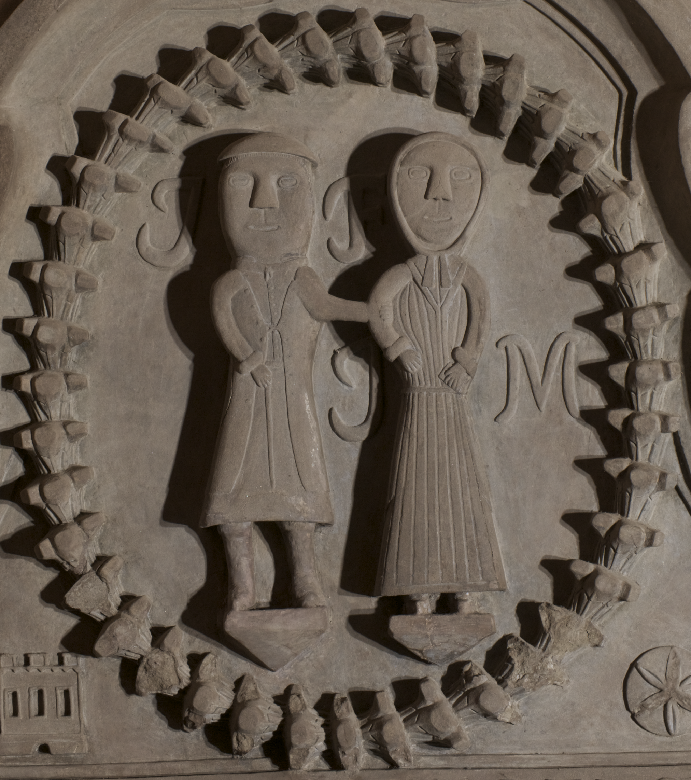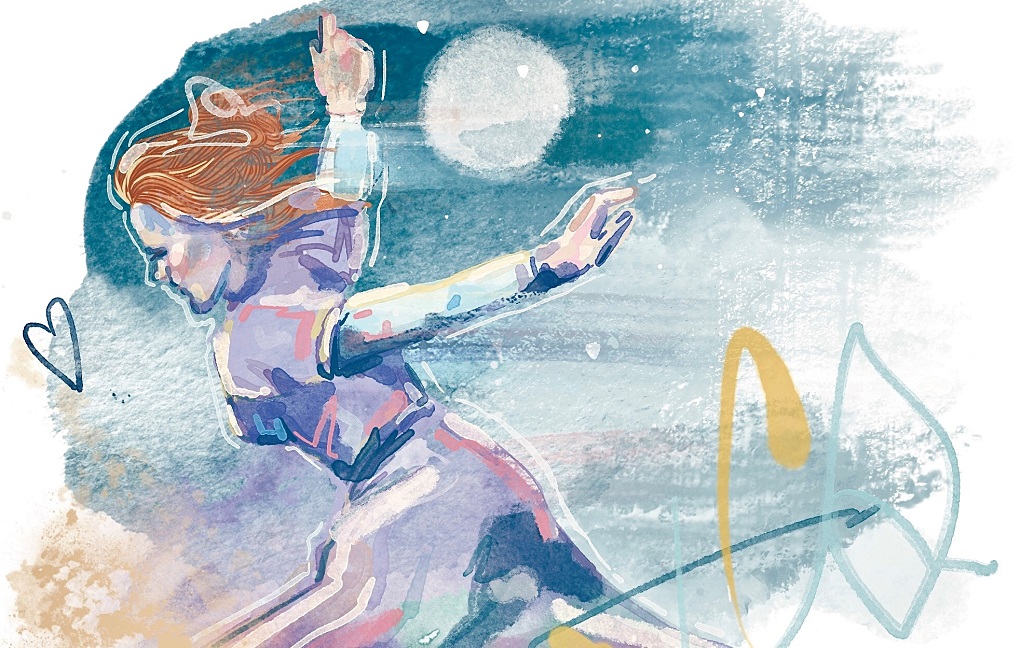What’s your favourite bit of romance from Scottish history?
There’s the famous, fiery and fateful relationship between Mary Queen of Scots and Lord Darnley. Maybe Burns’ A Red, Red Rose makes you cry every time? Did you know that one of the relics of St Valentine resides in a Glaswegian church?
Get ready for a virtual Valentine’s visit to castles, an abbey, a priory and a chapel-turned-library as we explore the passionate past of four Historic Scotland sites. Our romantic round-up starts on the outskirts of Perth…
Jump for my love

With more than its fair share of conspiracies, abductions and fighting, it’s safe to say that quite a lot has happened at Huntingtower Castle over the centuries. One of the more innocent tales, however, is the legend of the Lover’s Leap.
Huntingtower’s curious layout is key to this story. Today, the castle looks like a single building, but it originally consisted of two fine tower houses which stood about 3m apart.

It’s said that centuries ago, Dorothea, the daughter of the Earl of Gowrie, fell in love with a visitor to the castle. One night, she tiptoed out of her bed in one of the two buildings for a clandestine tryst in the adjacent tower.
But Dorothea’s canny mother suspected these shenanigans and made her way to the guest’s room. When Dorothea heard her mother’s footsteps coming up the stairs, she had to get back to her room quickly. There was only one escape route available…
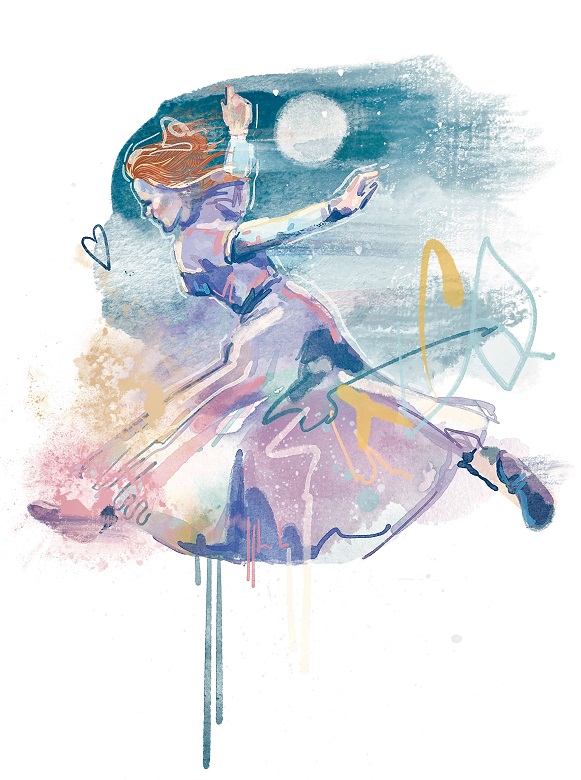
An illustration by Jacqueline Briggs of Dorothea making the “lover’s leap”
You guessed it! Desperate Dorothea successfully made a jump of around 2.5 metres between the two towers. Her suspicious mother found her moments later, safely tucked up in her own bed!
It’s said that Dorothea and her lover eloped and were married the very next day. The gap between a battlement and nearby tower is still known as the ‘Maiden’s Leap’ or the ‘Lover’s Leap’.
Together forever and never to part

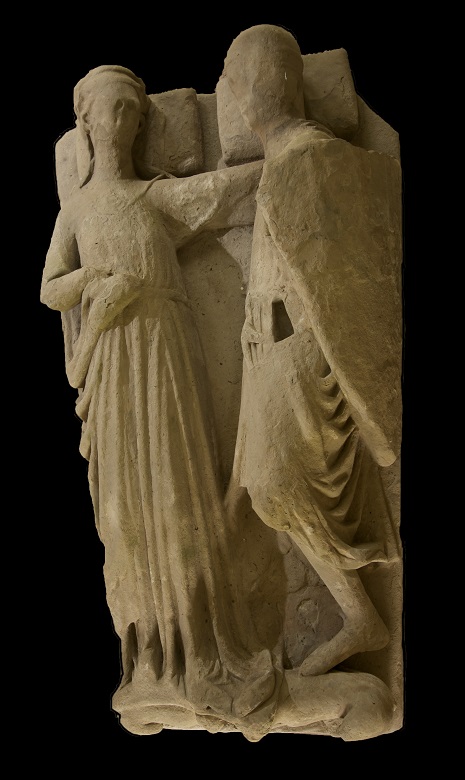
The Inchmahome double effigy
Something’s gotten hold of my heart
Next up, we’re going from one romantic effigy to another. Here’s a reminder that James Douglas taking Robert the Bruce’s ticker to Spain isn’t the only example from Scottish history of somebody carrying an embalmed heart around!
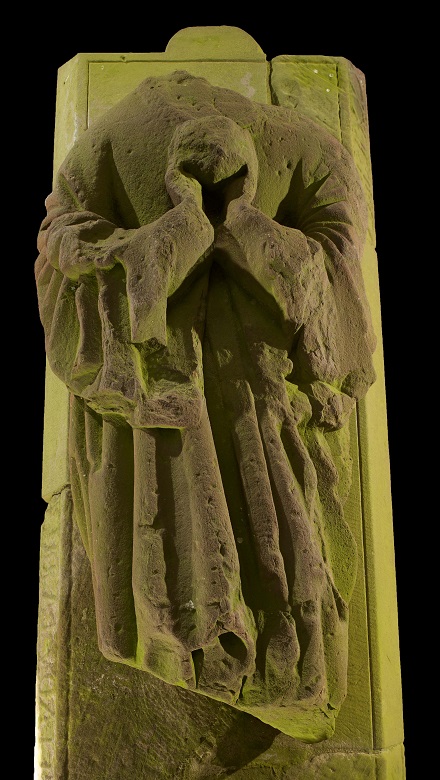
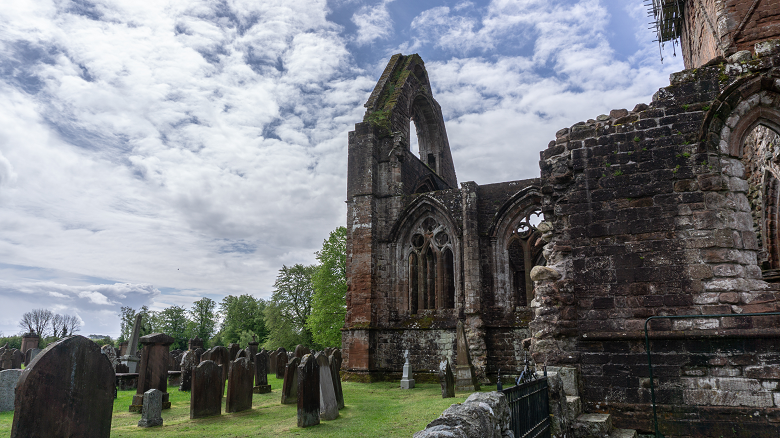
Sweetheart Abbey

How the inside of Sweetheart Abbey may once have looked, with Lady Devorgilla’s tomb at the altar
I’m just a jealous guy
AH Millar’s Traditions and Stories of Scottish Castles includes a local legend about a young man who fell in love with the gardener’s daughter at Burleigh Castle. When she married another man while he was away travelling, the “Lord of Burleigh” became tormented by jealousy. Enraged, he “shot his defence-less rival through the heart”.

What remains of Burleigh Castle today
While Millar places the tale in “the unsettled times betwixt the abdication of Queen Mary and the settlement of her son, James VI”, it bears a great resemblance to the exploits of Robert Balfour, 5th Lord Balfour of Burleigh in the early 1700s.
Balfour did indeed fall in love with a woman deemed by his family to be below his station. As a distraction, he was sent abroad on a Grand Tour. He declared that if the lady married in his absence, he would kill her husband at the first opportunity. Undeterred by these brazen ramblings, the lady married Henry Stenhouse, a schoolmaster from Inverkeithing, Fife.
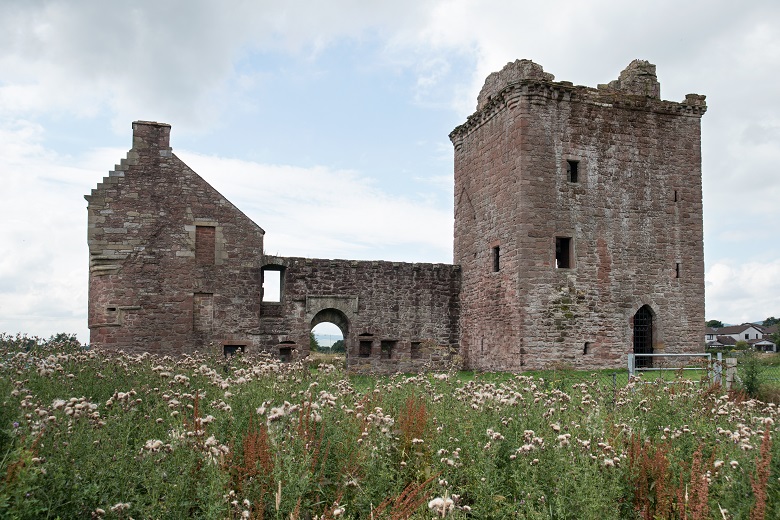
Burleigh was in the Balfour family from the mid-1400s to 1716
In April 1707, Balfour returned to Scotland and headed straight for Inverkeithing school. There, he shot Stenhouse in the shoulder. The teacher died from his wounds 12 days later. In August, Balfour was tried for murder. He claimed he had only intended to wound Stenhouse, pointing out that Stenhouse lived for almost two weeks after the incident. The defence failed and Balfour was sentenced to death. But the ripping yarn continues!
Balfour evaded execution by escaping from Edinburgh Tolbooth disguised as his sister. He was not heard of again until he appeared vociferously supporting the Jacobite cause in 1715. It was his involvement in the Jacobite Rising, rather than the appalling crime of passion, that caused him to lose the family estates. He died in 1757 and is buried in Greyfriars Kirkyard, Edinburgh.
